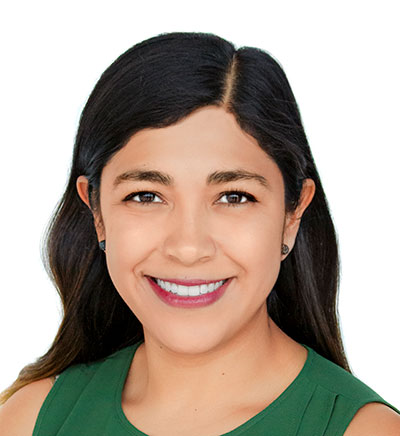Diversification Reduces Construction, Commercial, Market Risk

STORY INLINE POST
Q: What opportunities does the Mexican market offer to Cobra Development Fund?
A: The long-term base of real estate investment in Mexico is to offer attractive opportunities in different asset classes where Cobra Development Fund has been focused over the past few years. In particular residential, multifamily and industrial are asset classes that should provide higher returns in the long term compared to other real estate asset types given the demand drivers expected over the next years.
Q: What is the demand that exists, both in Mexico and the US, for these types of investment products?
A: Demand is slightly different in Mexico than in the US. For residential products, Mexico has a very large deficit which is further accentuated by the fact that household formation is growing faster and the average size of such households has been reducing with income growing over time. Demand has also been concentrated in the major metropolitan areas where supply in the most attractive areas has been limited.
Q: Why does Cobra Development Fund represent a better investment option in real estate than other investment vehicles like Fibras?
A: Our business model is focused on capturing the underserved demand for residential housing in the most dynamic and attractive submarkets of Mexico City. We focus on projects that have a shorter duration than the large residential projects that have proliferated over the last few years. This allows us to return capital faster and reduce risk by having less inventory per project. Through diversification we are able to reduce development, construction, commercial and market risk.
Q: Which type of project generates the most yield for investors and why?
A: Over the last five to 10 years, demand has allowed residential prices to grow much faster than inflation reaching double-digit growth in many years over that span of time. Even though Mexico City, in particular, has experienced this fast growth, prices per square meter are still below other comparable metropolitan areas in Latin America. Considering the existing strong demand, Cobra believes there is still enough room to continue experiencing this type of appreciation over the next years. Our partnership with Global Businesses Inc. has allowed us to control the construction process in multiple sites at the same time while maintaining costs and benefits from the economies of scale that larger projects are able to capture.
Cobra also uses a very analytical approach for the commercialization of our units which allows us to pre-sale an important percentage of our projects before construction completion, allowing us to provide higher returns than originally expected.
Q: What characteristics do you take into consideration when choosing the projects in which you will participate?
A: We conduct a deep analysis of the submarket dynamics to understand absorption rates, price appreciation and supply and demand imbalance, which help us to determine the range of land prices for each submarket. We then use all this information to design the units based on the most desirable characteristics such as size, number of bedrooms, bathrooms and parking spaces, among others.
Q: What are the most pressing concerns that investors have regarding the Mexican real estate market?
A: Investors are typically concerned about the exchange rate and the country’s political stability. Residential real estate is denominated in Mexican pesos but price appreciation has historically allowed this type of investments to partially compensate the exchange rate risk. Also, the short duration of projects that Cobra pursues allows us to reduce this risk when compared with other projects with longer durations.
Q: Though Cobra Development Fund specializes in projects in Mexico City and its metropolitan area, what opportunities do other fast-growing locations offer, such as Merida or even Monterrey?
A: Each market has unique dynamics and to evaluate opportunities we will use the same analytical approach. In the future we might evaluate opportunities in other markets where we are able to replicate our successful strategy, but for the time being we still see a lot of opportunities in Mexico City. Currently, we have new projects in the Narvarte, Anahuac, Cuauhtemoc, Portales and Las Aguilas neighborhoods.
Q: How can real estate developers and funds work together to boost the development of sustainable projects and buildings?
A: Nowadays, sustainability is a concept that has become an integral part of new real estate developments. Projects need to incorporate sustainability elements from the conceptual and design phases to include energy efficient materials in painting, lighting and insulation; solar panels, drain water recovery systems, use of energy efficient appliances and HVAC, among others. Projects also need to incorporate other features that help reduce the use of water, electricity and motor vehicles by providing spaces for bicycles and access to public transportation.
Q: What strategies can the real estate sector implement to ensure the industry can ride out of the current sanitary emergency?
A: Real estate development and construction in particular are industries that drive economic growth and recovery. After the crisis, these industries will be key to reactivate the economy around the world. Governments should provide support to facilitate the activation of these sectors by speeding up the processes to obtain permits and licenses, as well as financing programs that allow developers to reactivate current projects as fast as possible.
In particular real estate developers should continue evaluating opportunities and be ready to act as soon as the crisis is over. The world has changed and it is important for developers to assess new trends and requirements that could eventually lead to new formats of office space, retail and so on. This is a time when innovation in the real estate sector should allow developers to be at the forefront of the recovery.








 By Gabriela Mastache | Senior Journalist and Industry Analyst -
Tue, 06/02/2020 - 18:35
By Gabriela Mastache | Senior Journalist and Industry Analyst -
Tue, 06/02/2020 - 18:35
















